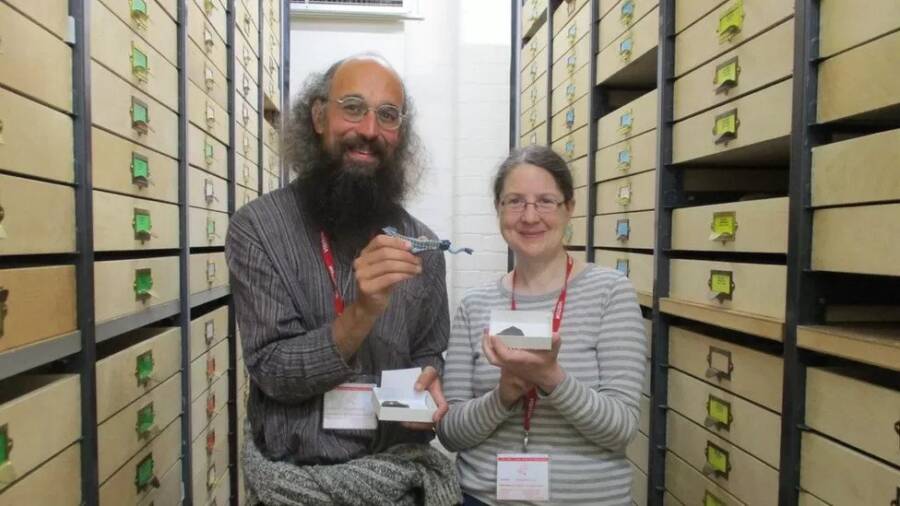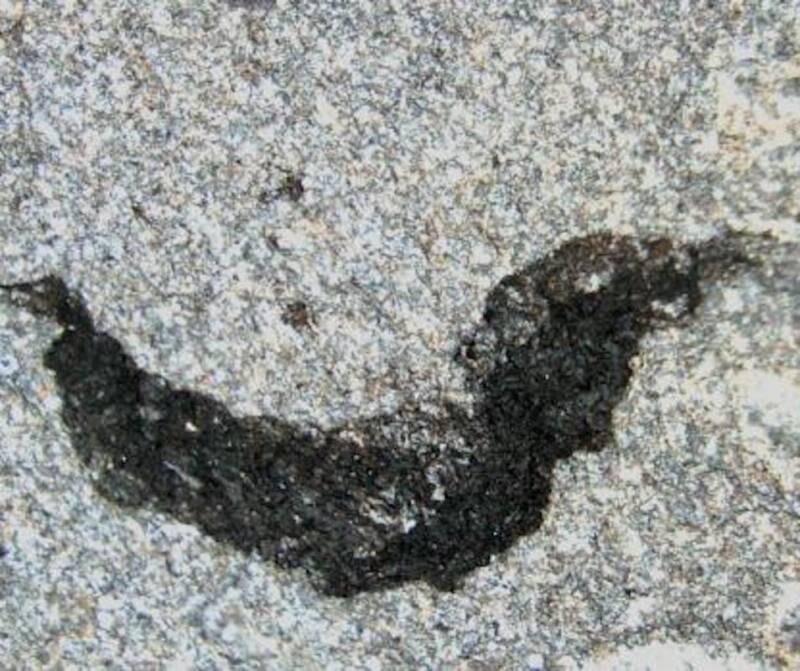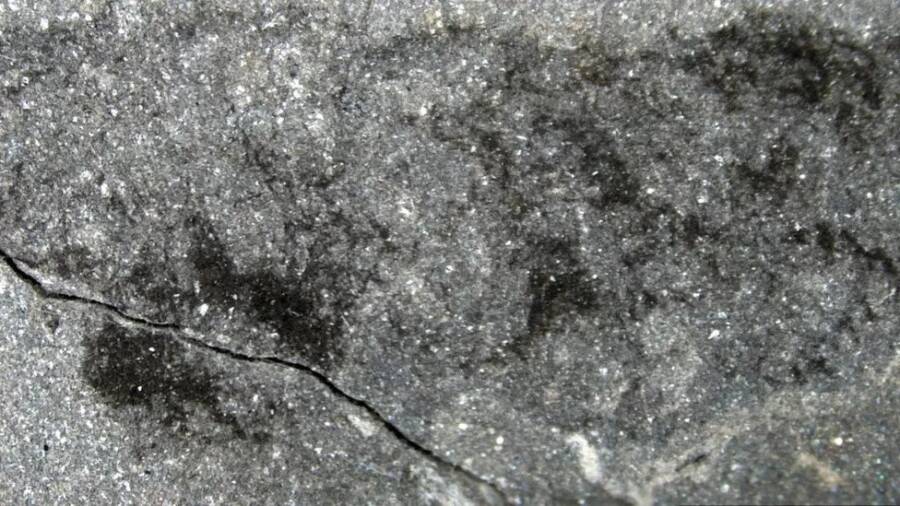These tiny marine fossils date back 460 million years, when an ocean covered the entirety of Wales.

National Museum WalesA depiction of the new species, dubbed Mieridduryn bonniae.
While excavating a sheep field in Llandrindod Wells, Powys, Wales, researchers came across two delicate, 460-million-year-old fossils that date back to when an ocean covered the country. Though scientists believe that they resemble an extinct marine life form called opabiniids, they think that the fossils represent a brand new species.
As phys.org explains, researchers Joseph Botting and Lucy Muir, fellows at the National Museum Wales, made the exciting find during the COVID-19 lockdown.
“When the lockdown started, I thought I’d make one more trip to collect some last sponges before finally writing them up,” Botting explained. “[O]f course, that was the day that I found something sticking its tentacles out of a tube instead.”
“This is the sort of thing that paleontologists dream of, truly soft-body preservation,” Muir added. “We didn’t sleep well that night.”
In a study published in Nature Communications, the researchers explained that they’d found two fossils while excavating the field, a known source for ancient sponges. One was about half an inch long, while the other was just 0.1 inches. Though the smaller specimen has not been named pending further research, the researchers dubbed the larger fossil Mieridduryn bonniae.

National Museum WalesDr. Joseph Botting and Dr. Lucy Muir are Honorary Research Fellows at Amgueddfa Cymru, National Museum Wales.
The first half of its name is Welsh for “bramble snouts” (mier, means bramble, and duryn, means snout), a nod to the creature’s spiked nose. The second half of its name is an homage to Bonnie, the niece of the owners of the field where Botting and Muir found the fossils.
“Many scientific names are made using Latin or Greek words,” Muir explained to phys.org, “but we really wanted to honor Wales, where the specimens were discovered, and so chose to use the Welsh language.” She added that Bonnie had been supportive and invested in their research.

National Museum WalesThe smaller of the two specimens, measuring just one-tenth of an inch long.
So what exactly are the fossils that Botting and Muir found? According to Live Science, they bear some resemblance to “weird wonders” called opabiniids, extinct marine creatures that emerged during the Cambrian explosion.
But the Welsh species, who lived during the Ordovician period (some 485.4 million to 443.8 million years ago), are 40 million years younger than opabiniids and have some important differences. M. bonniae has no eyes, for example, whereas opabiniids usually have five eyes. What’s more, M. bonniae has a spiky snout, whereas opabiniids have smooth snouts.
“It could be an opabiniid,” Joanna Wolfe, a research associate in the Department of Organismic and Evolutionary Biology at Harvard University who co-authored the new study, told Live Science. “[But] maybe it’s neither an opabiniid nor a radiodont — it’s kind of in between.”

National Museum WalesThe curious specimens were found in a Welsh quarry known for yielding ancient sponges — and researchers are eager to keep searching it for more fossils.
In fact, the researchers have speculated that the fossils might be more like arthropods, a group that includes modern crabs, spiders, and millipedes.
“The best-supported position for our Welsh specimens, whether considered as one or two species, were more closely related to modern arthropods than to opabiniids,” Stephen Pates of the University of Cambridge, the study’s lead author, told phys.org. “These analyses suggested that Mieridduryn and the smaller specimen were not ‘true’ opabiniids.”
The researchers also hypothesized that the smaller of the two fossils could be larvae of the larger M. bonniae specimen.
“The size of the smaller specimen is comparable to some modern arthropod larvae — we had to take into account this possibility in our analyses,” Wolfe explained to phys.org.
Whatever the Welsh fossils are, they represent an important link in evolutionary life on Earth. And Botting and Muir are eager to return to the sheep field to look for more evidence of ancient life. As Muir joked to phys.org, even modern-day mammals seem intrigued by their research.
“Even the sheep know we are on to something special here,” she said, “they usually come to watch.”
After reading about the fossils found in a Welsh sheep field, see how rabbits burrowing on Wales’ Skokholm Island uncovered a trove of Stone Age artifacts. Then, learn about planet Earth’s most astounding prehistoric animals.





